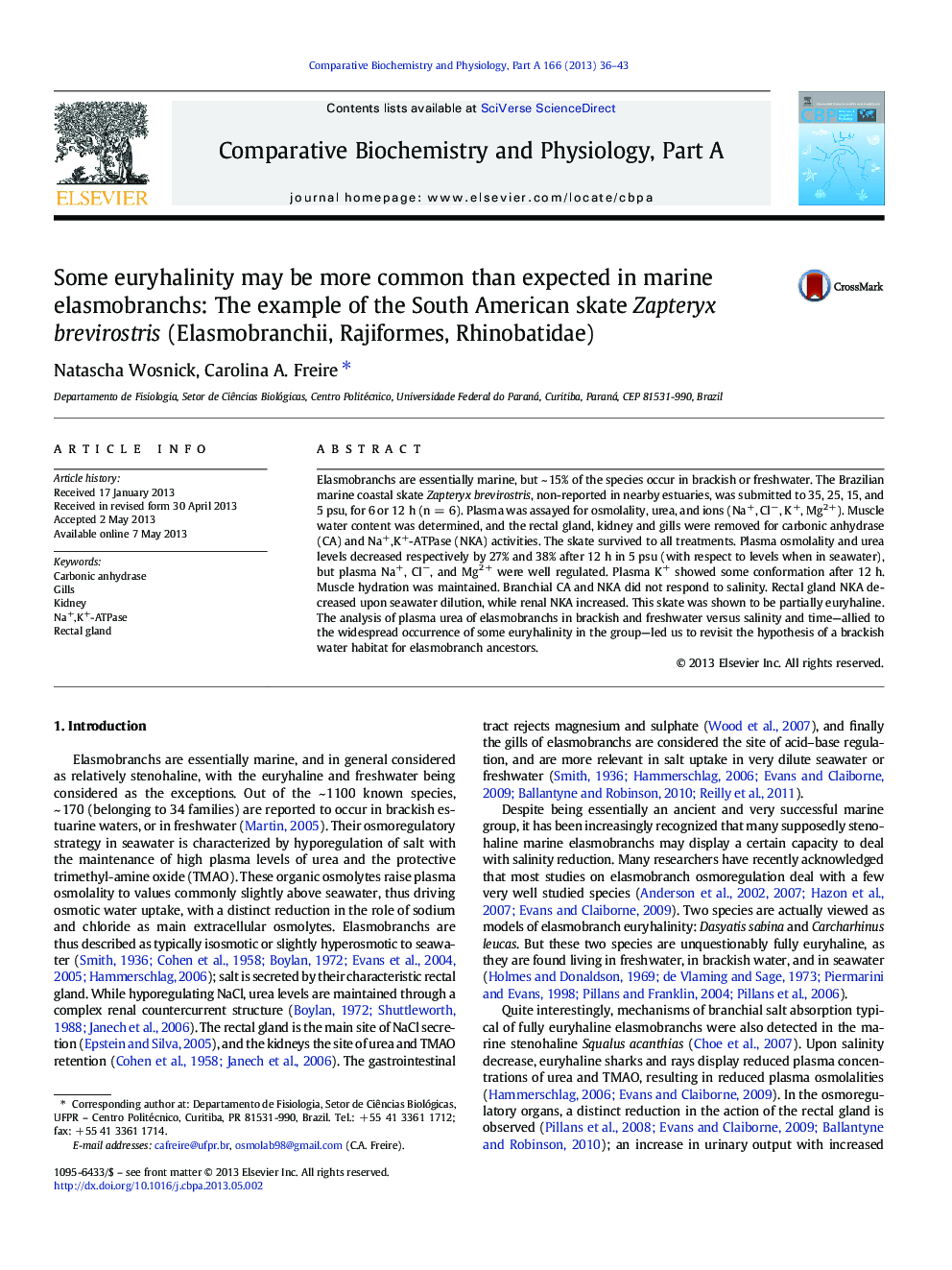| Article ID | Journal | Published Year | Pages | File Type |
|---|---|---|---|---|
| 10818876 | Comparative Biochemistry and Physiology Part A: Molecular & Integrative Physiology | 2013 | 8 Pages |
Abstract
Elasmobranchs are essentially marine, but ~ 15% of the species occur in brackish or freshwater. The Brazilian marine coastal skate Zapteryx brevirostris, non-reported in nearby estuaries, was submitted to 35, 25, 15, and 5 psu, for 6 or 12 h (n = 6). Plasma was assayed for osmolality, urea, and ions (Na+, Clâ, K+, Mg2 +). Muscle water content was determined, and the rectal gland, kidney and gills were removed for carbonic anhydrase (CA) and Na+,K+-ATPase (NKA) activities. The skate survived to all treatments. Plasma osmolality and urea levels decreased respectively by 27% and 38% after 12 h in 5 psu (with respect to levels when in seawater), but plasma Na+, Clâ, and Mg2 + were well regulated. Plasma K+ showed some conformation after 12 h. Muscle hydration was maintained. Branchial CA and NKA did not respond to salinity. Rectal gland NKA decreased upon seawater dilution, while renal NKA increased. This skate was shown to be partially euryhaline. The analysis of plasma urea of elasmobranchs in brackish and freshwater versus salinity and time-allied to the widespread occurrence of some euryhalinity in the group-led us to revisit the hypothesis of a brackish water habitat for elasmobranch ancestors.
Related Topics
Life Sciences
Biochemistry, Genetics and Molecular Biology
Biochemistry
Authors
Natascha Wosnick, Carolina A. Freire,
